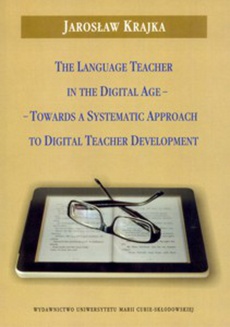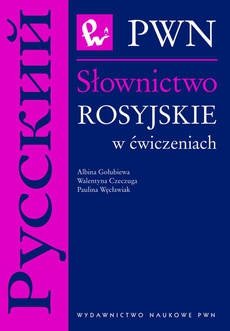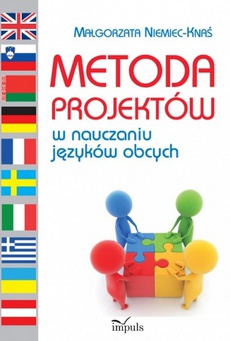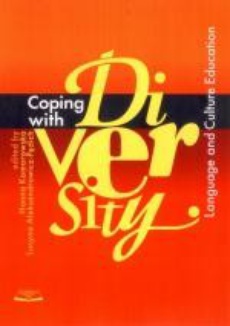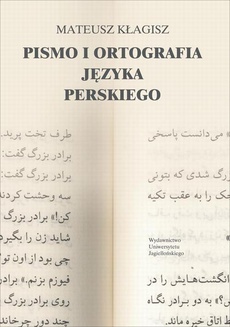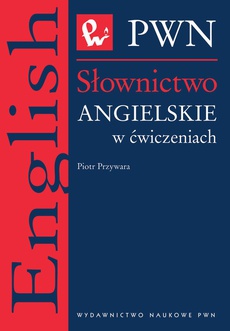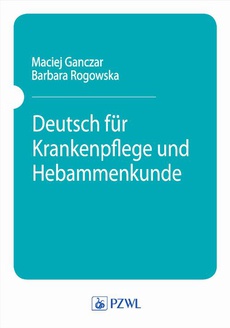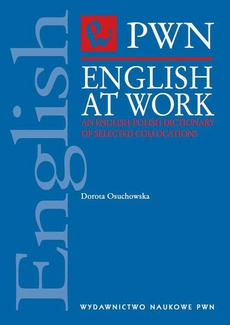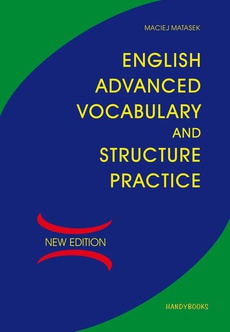INNE EBOOKI AUTORA
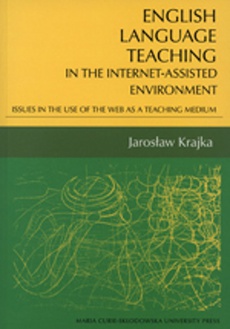
English language teaching In the Internet-assisted environment. Issues in the use of the web as a teaching medium
Autor:
Format:
pdf, ibuk
The present work deals with the notion of the Internet as a teaching medium, describing extensively various aspects of the teachinig process, such as available Internet-based activity formats (chapter 1), tools for possible use in an Internet classroom (chatpers 2 and 3) and Internetassisted language skills instruction (chapter 4). The issue of designing Internet-based language teaching, both on the level of an individual lesson and the overall curriculum, is addressed in chapter 5, while chapter 6 contains a discussion of practical aspects of organising, managing and troubleshooting an Internet-based classroom.
| Rok wydania | 2007 |
|---|---|
| Liczba stron | 348 |
| Kategoria | Nauka języków obcych |
| Wydawca | Wydawnictwo Uniwersytetu Marii Curie-Skłodowskiej |
| ISBN-13 | 978-83-227-2726-3 |
| Język publikacji | angielski |
| Informacja o sprzedawcy | ePWN sp. z o.o. |
POLECAMY
Ciekawe propozycje
Spis treści
| Acknowledgements | 5 |
| Abbreviations used | 9 |
| Introduction | 17 |
| Chapter one. Web-Based Activity Formats | 23 |
| 1.1. Treasure hunts(scavenger hunts) | 24 |
| 1.1.1. Definition and typology | 24 |
| 1.1.2. Benefits and drawbacks of implementing treasure hunt in language teaching | 26 |
| 1.1.3. Constructing treasure hunts | 27 |
| 1.2. Virtual fieldtrips (telefieldtrips) | 28 |
| 1.2.1. Definition and characteristics | 28 |
| 1.2.2. Types of virtual fieldtrips | 31 |
| 1.2.3. The rationale for incorporating virtual fieldtrips in the language classroom | 32 |
| 1.2.4. Designing and running teacher-made virtual fieldtrips | 33 |
| 1.3. Keypal exchanges | 36 |
| 1.3.1. Keypal activities vs. traditional exchanges | 36 |
| 1.3.2. Implementations of keypal exchanges in the foreign language classroom | 38 |
| 1.3.3. Starting a keypal exchange | 39 |
| 1.3.4. Preparing and running an exchange | 41 |
| 1.3.5. Developing an exchange into a larger-scale project | 43 |
| 1.3.6. Pitfalls to avoid in conducting language-oriented keypal exchanges | 45 |
| 1.4. Other interpersonal exchange activities | 46 |
| 1.4.1. Variations of interpersonal exchange activities | 46 |
| 1.4.2. Arguments for the introduction of interpersonal exchange activities in the foreign language curriculum | 49 |
| 1.4.3. Applications of interpersonal exchange activities | 49 |
| 1.4.4. Creating and impelementing an interpersonal exchange activity | 50 |
| 1.5. WebQuests | 53 |
| 1.5.1. Definition | 53 |
| 1.5.2. A taxonomy if WebQuests and WebQuest tasks | 55 |
| 1.5.3. Reasons for including WebQuests in language instruction | 56 |
| 1.5.4. Selecting and designing WebQuests | 58 |
| 1.5.5. Running a WebQuests lesson | 60 |
| 1.6. Online research modules | 61 |
| 1.6.1. The characteristics of online research modules | 61 |
| 1.6.2. Creating online research modules | 64 |
| 1.7. Online simulations | 65 |
| 1.8. Other Internet-based activity structures | 67 |
| Chapter Two. Reference Tools in the Internet-Assisted Classroom | 69 |
| 2.1. Online reference tools for strategy training | 70 |
| 2.1.1. Online dictionaries: typology and features | 70 |
| 2.1.2. Reference tools for ESP: specialized dictionaries, glossaries and terminology databanks | 73 |
| 2.1.3. Mono-and bilingual glossaries as an element of teacher resourcing | 74 |
| 2.1.4. A general dictionary expandable with downloadable modules | 75 |
| 2.1.5. Modes of dictionary access | 76 |
| 2.1.6. Online resourcing-a proposal for strategy training | 78 |
| 2.2. Corpora and concordancing in the language classroom | 84 |
| 2.2.1. Corpora-definitions and taxonomies | 85 |
| 2.2.2. promoting learning skills with corpus consultation procedures | 87 |
| 2.2.3. Obstacles to the use of concordancing in the language classroom | 88 |
| 2.2.4. Implementing concordancing in the language instruction | 89 |
| 2.2.5. Concordancing tools for the language classroom | 93 |
| Chapter Three. Communication tools for the Internet-Assisted Classroom | 97 |
| 3.1. Blogging for EFL- using blogs to enhance language learning | 98 |
| 3.1.1. Definition of blogs | 98 |
| 3.1.2. General characteristics of blogs | 99 |
| 3.1.3. Blogs types | 101 |
| 3.1.4. Blogs in teaching English as a foreign language | 104 |
| 3.2. A wikiwiki classroom-real-time interactive tools in teaching writing | 106 |
| 3.2.1. Defining wikis | 106 |
| 3.2.2. The origins and development of the “Wiki Movement” | 108 |
| 3.2.3. The rationale for wiki use in a foreign language writing programme | 109 |
| 3.2.4. The procedure for building one’s own wiki | 111 |
| 3.2.5. Problems and solutions to wiki use | 113 |
| 3.3. MOOs and Virtual Reality | 114 |
| 3.3.1. MOOs-definition and historical background | 114 |
| 3.3.2. Arguments for use of MOOs in language learning | 116 |
| 3.3.3. Problems in the classroom use of MOO | 118 |
| 3.3.4. Examples of Educational MOOs(EduMOOs) | 120 |
| 3.3.4.1. SchMOOze University(http://schmooze.hunter.cuny.edu:8888) | 121 |
| 3.3.4.2. Diversity University (http://www.du.org) | 122 |
| 3.3.4.3. Tapped In (http://www.tappedin.org) | 122 |
| 3.3.5. Guidelines for successful implementation of MOOs in the language classroom | 123 |
| 3.3.6. From text-based reality to multimedia virtual reality | 125 |
| 3.4. Computer conferencing in the blended classroom | 128 |
| 3.4.1. Defining and characterizing computer conferencing | 128 |
| 3.4.2. The rationale for the incorporation of computer conferencing in the language classroom | 130 |
| 3.4.3. Applications of real-time conferencing in foreign language teaching | 132 |
| 3.4.4. Classroom conferencing problems and drawbacks | 134 |
| 3.4.5. preparing a foreign language classroom for computer conferencing | 136 |
| 3.4.6. Conferencing in the classroom-technological solutions | 137 |
| Chapter Four. Teaching language Skills in the Internet-Based Environment | 143 |
| 4.1 Web-assisted listening comprehension | 144 |
| 4.1.1. The characteristics of listening instruction in the blended learning environment | 144 |
| 4.1.2. Online listening materials | 147 |
| 4.1.3. Digital video in the foreign language classroom | 152 |
| 4.1.4. Text-to-Speech technology in developing listening comprehension skills | 154 |
| 4.1.5. Authoring listening materials | 157 |
| 4.1.6. Internet-mediated listening activities | 160 |
| 4.2. Developing reading skills in the Internet-mediated classroom | 162 |
| 4.2.1. General consideration of the reading instruction | 162 |
| 4.2.2. Types of online reading materials | 164 |
| 4.2.3. The reading instruction in the Internet-assisted environment | 167 |
| 4.2.3.1. Pre-reading activities | 167 |
| 4.2.3.2. While-reading activities and the use of reference tools | 168 |
| 4.2.3.3. Post-reading productive work | 170 |
| 4.2.4. Internet-based reading activities | |
| 4.2.5. Electronic authoring of reading materials | 175 |
| 4.3. Developing writing skills in the blended learning context | 176 |
| 4.3.1. The rationale for Web-based writing instruction | 177 |
| 4.3.2. The approaches to teaching writing online | 179 |
| 4.3.2.1. Writing as a process | 179 |
| 4.3.2.2. Writing as a product | 180 |
| 4.3.2.3. Writing as a collaborative activity | 182 |
| 4.3.2.4. Writing as a follow-up to Internet-based activities | 183 |
| 4.3.3. Facilitating writing with computer tools | 184 |
| 4.3.4. Computer applications in the writing classroom | 186 |
| 4.3.4.1. Emailing | 187 |
| 4.3.4.2. Webpublish 4.ing | 188 |
| 4.3.4.3. Electronic portfolios | 191 |
| 4.3.5. Examples of Web-based environment | 193 |
| 4.4. Developing speaking skills in the Web-based environment | 193 |
| 4.4.1. Web-based communicative teaching and Project-oriented CALL(PrOCALL) | 194 |
| 4.4.2. Internet-mediated communicative tasks | 195 |
| 4.4.3. Approaches to Internet-assisted speaking instruction | 198 |
| 4.4.3.1. The Web as input for speaking activities | 198 |
| 4.4.3.2. Online materials as models for the development of speaking skills | 200 |
| 4.4.3.3. Computer-Assisted Classroom Discussion | 202 |
| 4.4.4. Developing and delivering computer presentations | 204 |
| 4.4.5. Internet-based speaking lesson plans | 208 |
| 4.5. Web-based pronunciation teaching | 211 |
| 4.5.1. The Web-based learning environment and the development of pronunciation skills | 211 |
| 4.5.2. Phases of pronunciation teaching in the Web-enhanced classroom | 213 |
| 4.5.2.1. Discrimination | 213 |
| 4.5.2.2. Presentation | 217 |
| 4.5.2.3. Practice | 220 |
| 4.5.2.4. Production | 222 |
| 4.5.3. Online pronunciation teaching | 224 |
| Chapter Five. Developing an Internet-Based Component to Supplement Coursebook Teaching | 227 |
| 5.1. The motivation for the curricular innovation | 228 |
| 5.2. The curricular contexts | 231 |
| 5.2.1. Public language education | 231 |
| 5.2.2. ESP instruction at the tertiary level | 233 |
| 5.3. The process of adapting, designing and evaluating the curriculum | 235 |
| 5.3.1. Conceptualising the curriculum | 235 |
| 5.3.2. The procedure of creating the Internet-based curricular supplement | 237 |
| 5.3.3. Anticipating problems | 239 |
| 5.4. Sample curriculum products | 241 |
| 5.4.1. The Internet-based general English component | 241 |
| 5.4.2. The Internet-based English for Specific Purposes component | 247 |
| Chapter Six. Organising and Managing the Web-Based Classroom | 251 |
| 6.1. Learner skills | 252 |
| 6.1.1. Computer skills | 253 |
| 6.1.2. Web skills | 254 |
| 6.1.3. language skills | 255 |
| 6.1.4. Learner training | 255 |
| 6.2. Teacher skills | 257 |
| 6.2.1. technical skills | 257 |
| 6.2.2. Other skills | 258 |
| 6.2.3. Opportunities for self-study ICT teacher training | 259 |
| 6.2.4. A proposal for a pre-service ICT teacher training system | 265 |
| 6.2.4.1. issues of content selection | 265 |
| 6.2.4.2. Distribution of training in the foreign philology curriculum | 267 |
| 6.3. Technological requirements | 270 |
| 6.3.1. Lab access, layout and organization | 270 |
| 6.3.2. The Internet connection | 274 |
| 6.3.3. Software | 276 |
| 6.3.4. Hardware and system requirements | 280 |
| 6.4. Adding a Web presence to the classroom- from a class website to a Learning Management System | 283 |
| 6.4.1. The rationale for a Web presence in a language course | 283 |
| 6.4.2. Designing teacher websites | 284 |
| 6.4.3. Using a Web-based classroom assistant (Nicenet) | 286 |
| 6.4.4. Setting up a dedicated discussion group to enhance a course | 288 |
| 6.4.5. managing Web-based instruction with a Learning Management System | 290 |
| 6.5. Running an Internet lesson | 294 |
| 6.5.1. teacher roles in the Web-based classroom | 294 |
| 6.5.2. maintaining discipline in the Web-assisted environment | 296 |
| General conclusions | 299 |
| References | 303 |
| Appendices | 332 |
| Appendix 1. Examples of Internet-based activity formats | 323 |
| Appendix 2. Online reference tools | 328 |
| Appendix 3. Sample computer conferencing resources | 330 |
| Appendix 4. Internet-based lesson plans | 332 |
| Summary | 347 |

